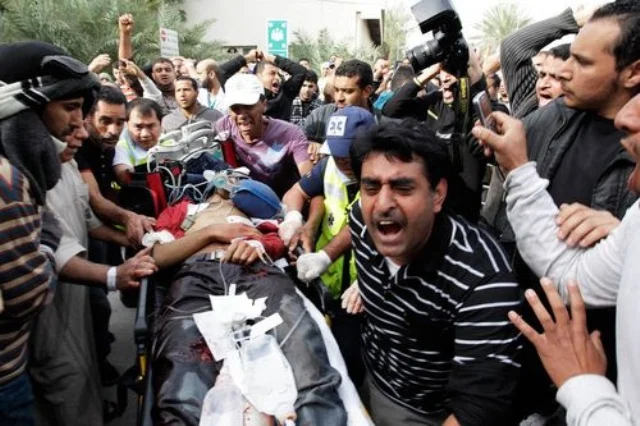Sudanese Death by Stoning | Intisar Abdalla
/Ayanna Nahmias, Editor-in-ChiefLast Modified: 23:53 PM EDT, 31 May 2012
 KHARTOUM, Sudan - Intisar Sharif Abdalla, a young Sudanese woman has been sentenced to death by stoning for the alleged crime of adultery. She was sentenced by an Ombada criminal court but is being held in the capital while her case is under appeal according to Reuter’s news agency.
KHARTOUM, Sudan - Intisar Sharif Abdalla, a young Sudanese woman has been sentenced to death by stoning for the alleged crime of adultery. She was sentenced by an Ombada criminal court but is being held in the capital while her case is under appeal according to Reuter’s news agency.
Abdalla is the latest woman to become ensnared by would be arbiters of moral turpitude within the Islamic world. These men routinely condemn people under Sharia law to punishments ranging from flogging to stoning.
Convictions and sentencing of women for alleged sexual crimes has become increasingly prevalent in East and West African countries where extreme Islamist are coalescing their power base and instituting Taliban like rule over the populace.
In Abdalla’s case, she has also fallen victim to the confluence of events that led to the succession of South Sudan last year. South Sudan's population practices a variety of beliefs including Christianity and indigenous practices, whereas Sudan is ubiquitously Muslim.
During her trial by the Ombada court, she could not assist her lawyers in mounting any defense because she does not speak Arabic and an interpreter was not provided for her. Additionally, according to Reuters she is illiterate and her nationality has not been confirmed. She could have been a refugee fleeing one of the numerous conflicts that continue to plague either Sudan or South Sudan, or one of the neighboring countries.
Humanitarian groups, such as Human Rights Watch have sounded the alarm and brought Abdalla’s plight to the attention of the world. In addition to her rights being violated as a woman, her infant son is imprisoned with her as she awaits the outcome of her 22 April 2012 conviction.
Sudan began moving toward a more stringent interpretation of Islamic law following a 1989 coup. Ten years later in Northern Nigeria, Islamic extremists like Boko Haram implemented Sharia law with the desire to supersede existing legislative statutes codified by a non-religious government.
Like Northern Nigeria which seeks to usurp and replace existing laws with Sharia, President Omar Hassan al-Bashir committed to the adoption of a fully Islamic constitution following the secession of the south.
"If south Sudan secedes, we will change the constitution and at that time there will be no time to speak of diversity of culture and ethnicity," Bashir told supporters at a rally in the eastern city of Gedaref.
"Sharia [Islamic law] and Islam will be the main source for the constitution, Islam the official religion and Arabic the official language," he said. (Source: Guardian UK)
Nigeria and now Sudan have had cases in which Islamic Sharia courts have sentenced women to death by stoning. In Nigeria both Safiya Hussaini and Amina Lawal were sentenced for adultery, but after international pressure and global outcry, each of the women was subsequently freed.
However, while incarcerated they faced the prolonged threat of a horrible death, the possibility of being murdered extra judicially, as well as the psychological stress of living at the mercy of irrational misogynists.
Abdalla’s case will hopefully be dismissed or her sentenced commuted, which according to Fahima Hashim, a women's rights activist, is a real possibility because previous stoning sentences in Sudan had not been carried out. If Abdalla could comprehend the complexity of case and its potential outcome, it would provide scant relief, and for now we can do little more than wait with her.
Related articles
- Sudan Set to Implement Sharia if South Breaks Away (waronterrornews.typepad.com)
- Fighting child marriage in Sudan (macleans.ca)
- "Submit to Sharia or get out" of Sudan: Ethnic Cleansing the North (atlasshrugs2000.typepad.com)
- "Submit to Sharia or get out" of Sudan (iamiranaware.wordpress.com)





































